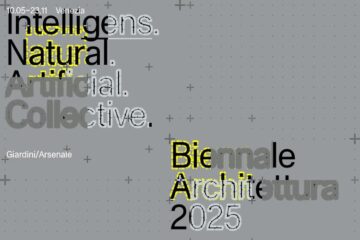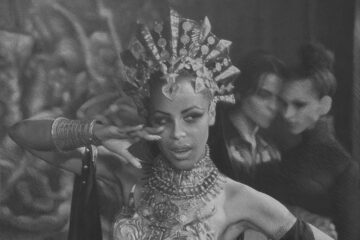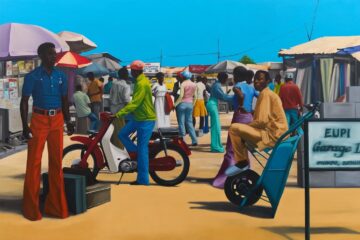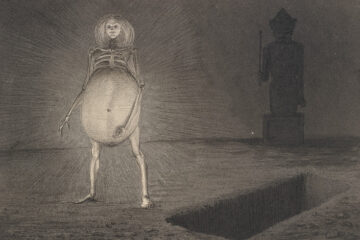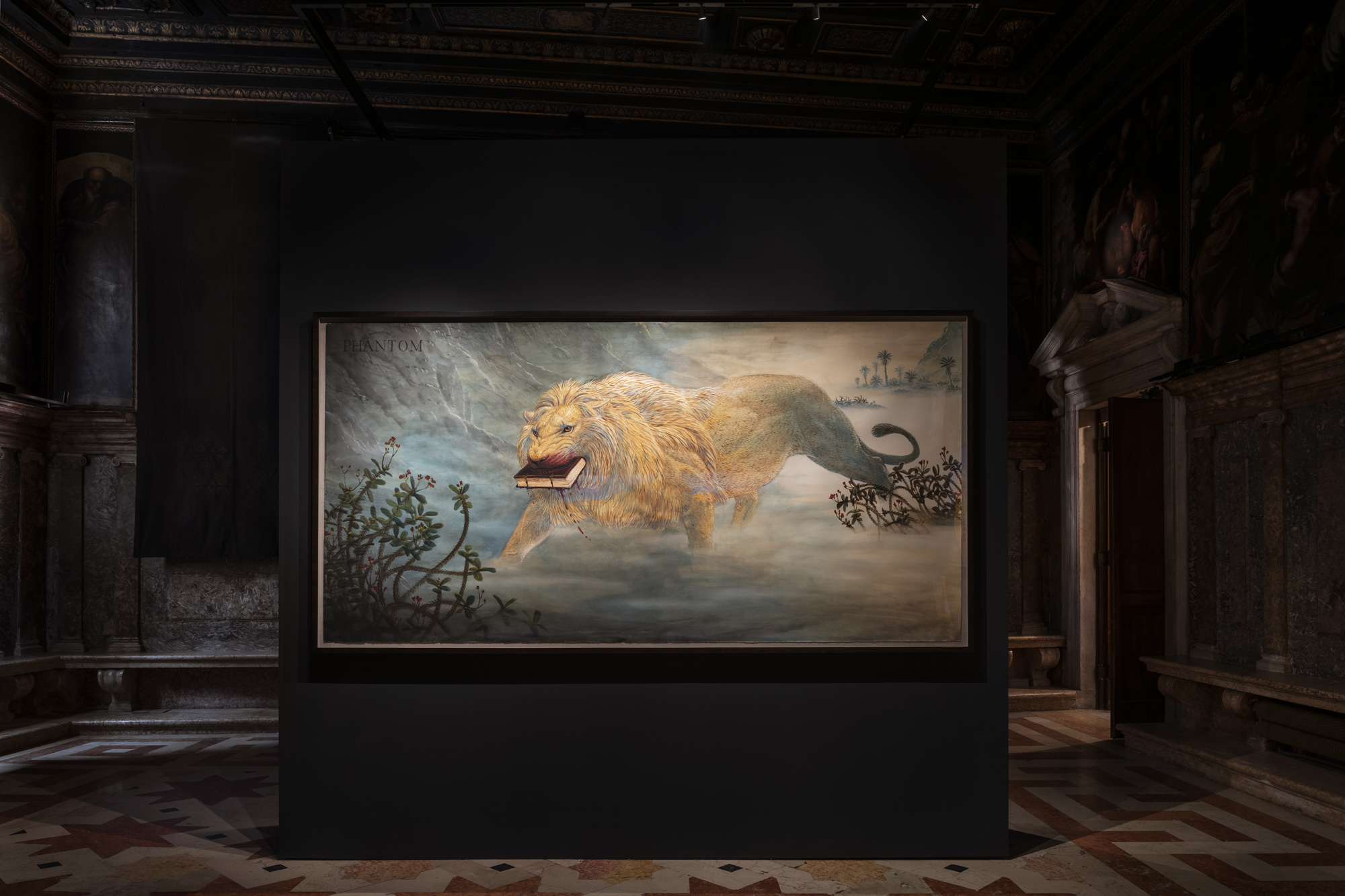
During the opening week of the Biennale Arte 2024, the first solo exhibition in Italy of the American artist Walton Ford opened at the Ateneo Veneto di Scienze, Lettere ed Arti in Venice.
Titled Lion of God, the exhibition consists of a series of monumental watercolours painted by Ford between 2023 and 2024, in dialogue with the Ateneo’s building and, in particular, with Tintoretto’s Apparizione della Vergine a San Girolamo (The Apparition of the Virgin to Saint Jerome) (c. 1580), part of the institution’s collection.
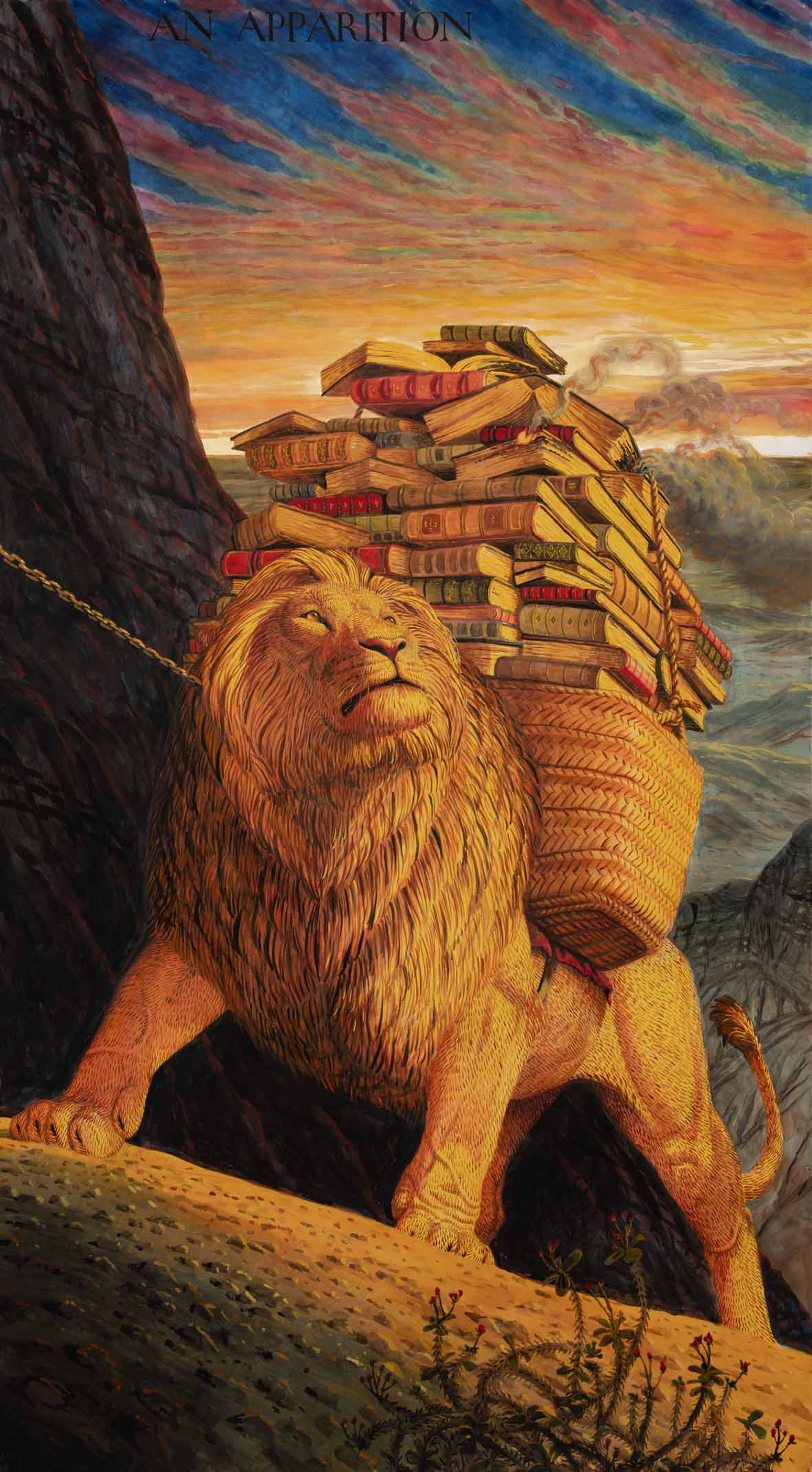
This is not the first time that the Ateneo Veneto’s Scuola di San Fantin has hosted a contemporary art exhibition with a site-specific project inspired by the architecture and heritage of the venue. In 2022, the German painter Daniel Richter presented the exhibition Limbo, in response to Jacopo Palma il Giovane’s paintings of Purgatory and the other masterpieces that adorn the ceiling and walls of the Ateneo.
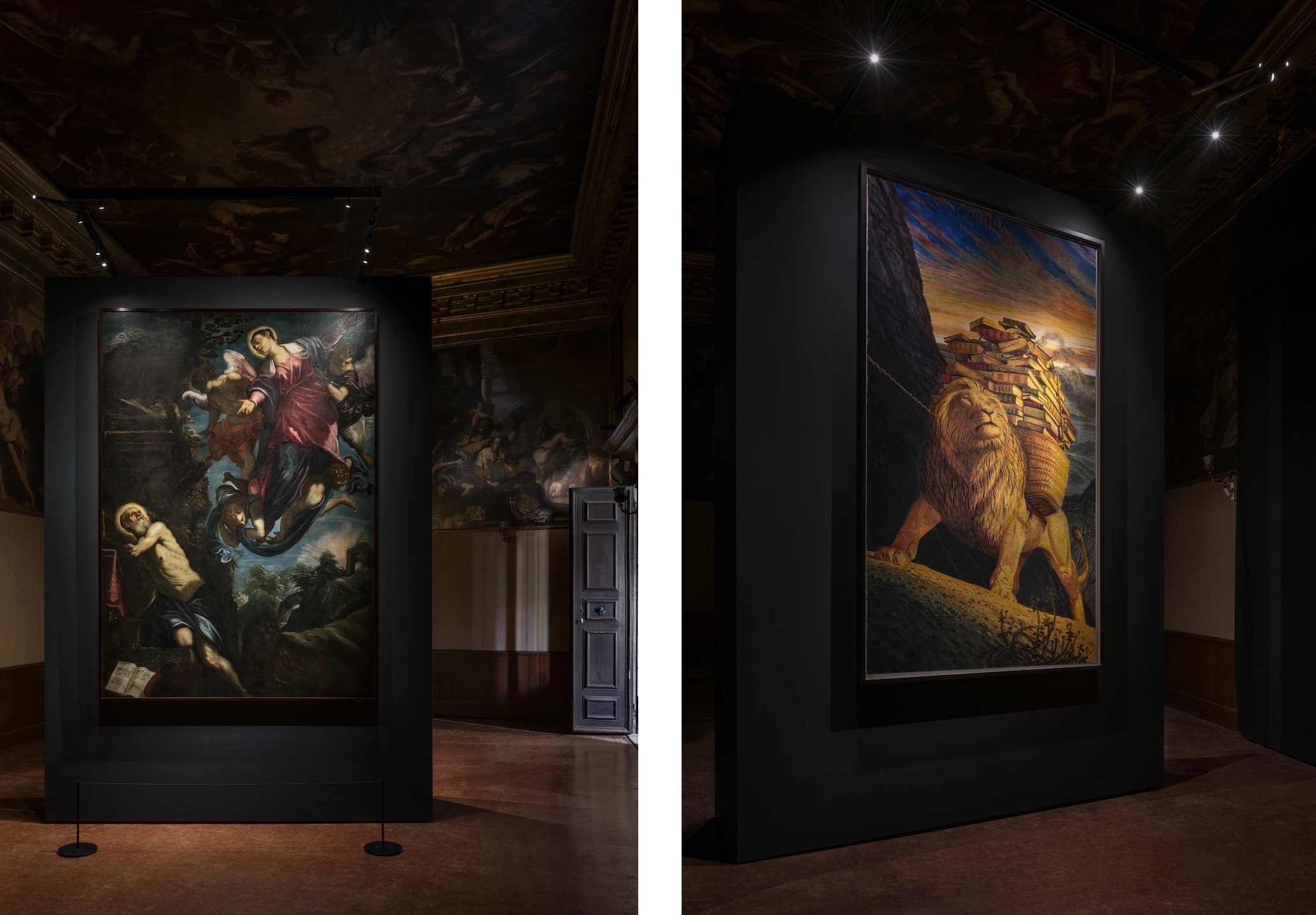
In Lion of God, the historic painting Apparizione della Vergine a San Girolamo is for Ford “a poignant entry point into a visual discussion of our relationship with the natural world”. Tintoretto depicted St Jerome in ecstasy, in the midst of a vision of the Virgin Mary descending from heaven. The lion, painted close to the Saint (at the bottom, in the dark), is described in the legend as befriending St Jerome after he pulls a thorn from its paw. The bond between the two figures is described in detail in Jacopo da Varazze’s The Golden Legend (1493), an hagiography widely known in late medieval Europe and a reference for Ford.
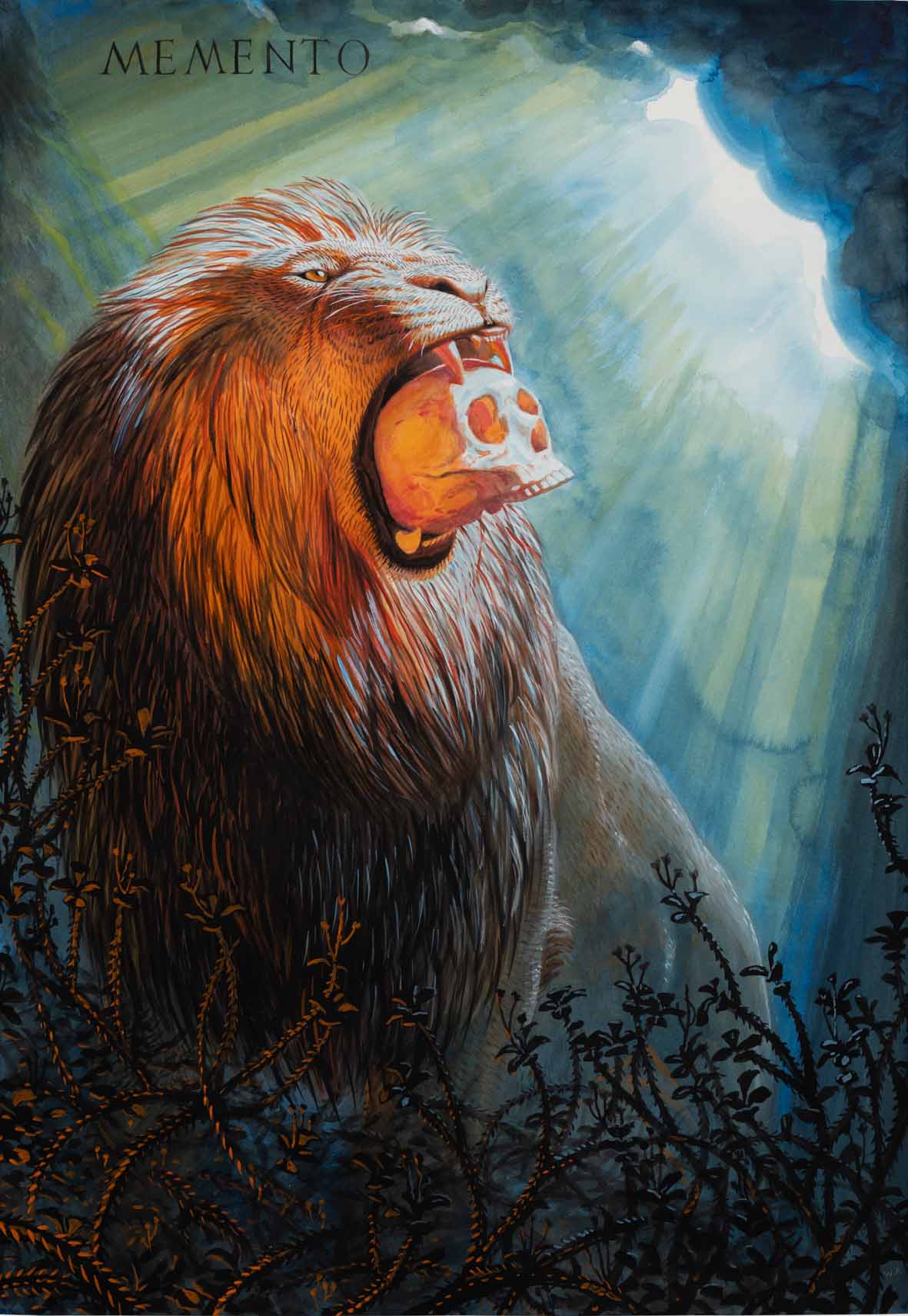
Whereas in Tintoretto’s painting we see St Jerome (therefore a man) as the protagonist (prominent and illuminated), in Ford’s work the animals have a leading role. Ford’s lion is bathed in light (like St Jerome) and looks up in exactly the same way as the Saint (Memento, 2024; An Apparition, 2024). In addition to having the same features as Tintoretto’s St Jerome, it is also portrayed as a vision, an apparition (Phantom, 2023).
The lion has always been a powerful symbol in the history of art, associated with different interpretations. Full of meanings, Ford’s lion encapsulates the religious symbolism linked to its figure, it is the reincarnation of the Serenissima and, as king of the animals, symbolises the primordial relationship between man and nature. A difficult relationship that becomes ambiguous in Ford’s paintings: rather than being helped by the removal of the thorn from its paws, the animal seems to be crucified in the work Leo Dei, 2023.
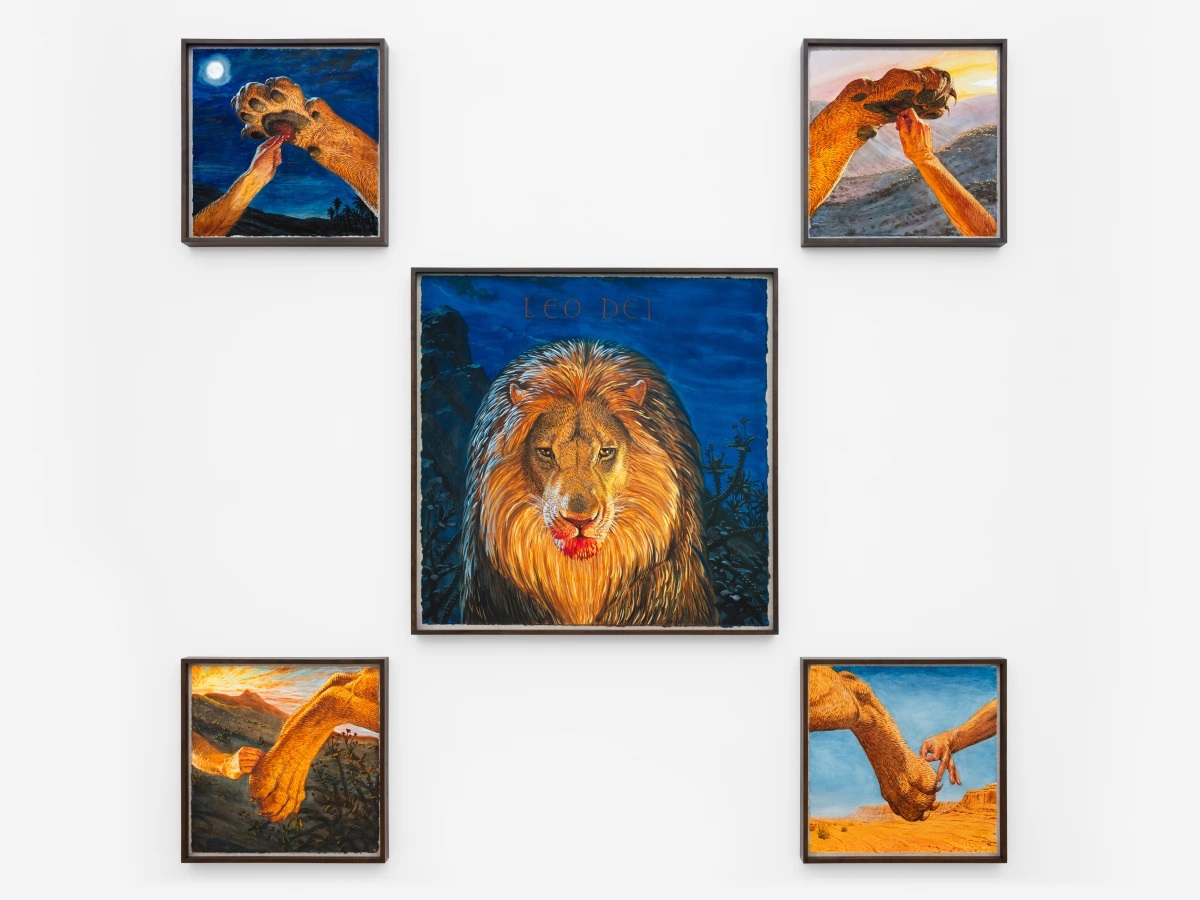
Curator Udo Kittelmann says of the project: “In search of finding analogies between the past and the present, Walton Ford’s paintings superimpose intricate natural history depictions with current perceptions and critical commentaries, as well as adding quotes from literary sources from past centuries, rendered in the style of the old masters. In his artworks, which can be seen as satires on political oppression and the exploitation of the environment, he casts doubt on the ‘ever new’ and the ‘ever better’. At the same time Ford has always been raising questions on a diverse range of expectations and established rules in contemporary aesthetics. To be precise, his paintings are a plot about the arrogance of human nature. Yesterday, today and tomorrow.”
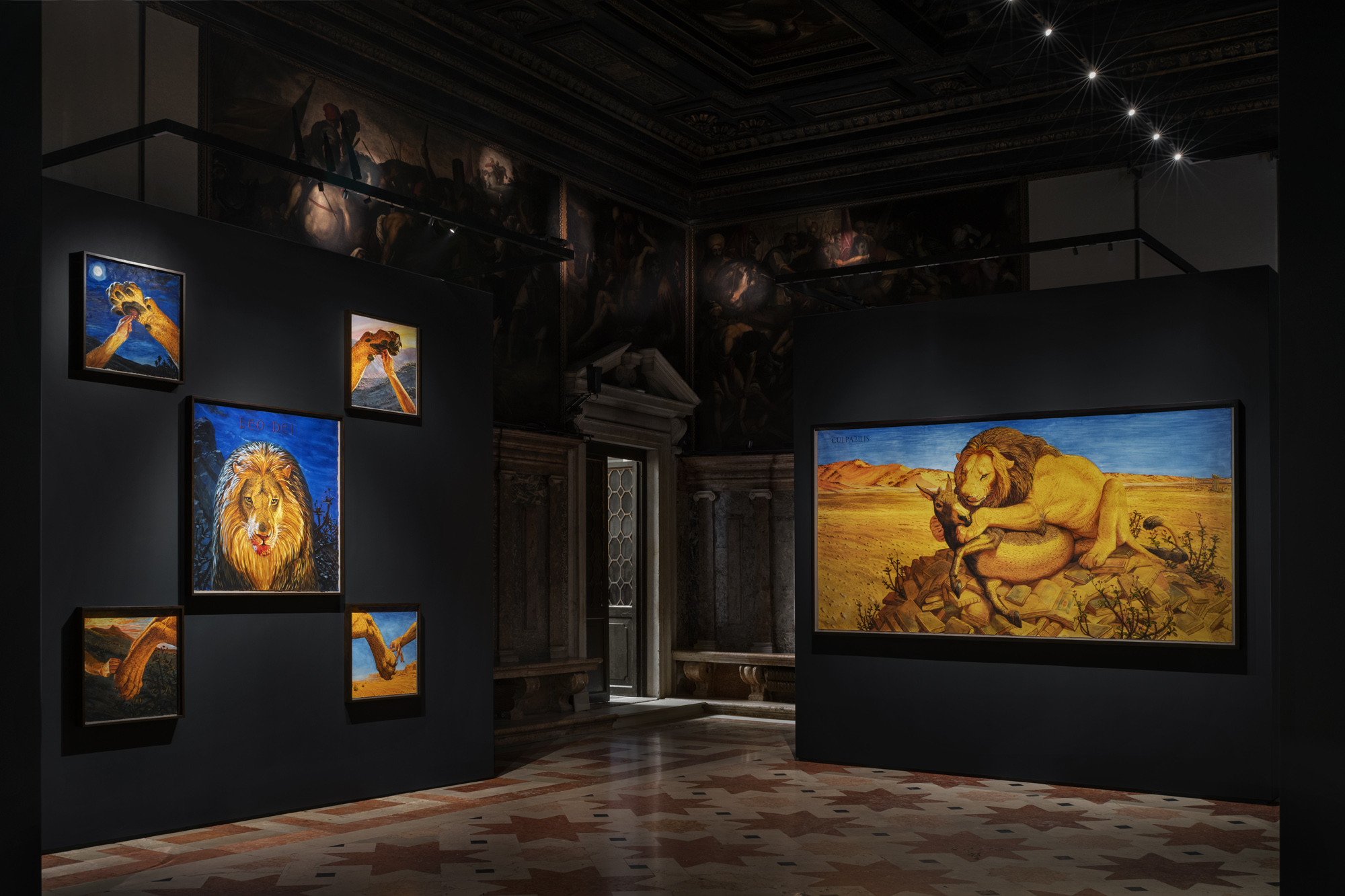
A peculiar use of light enriches the sense of the exhibition. Direct rays of light, in an almost dark space, illuminate the animals in the paintings on the walls and ceiling of the Ateneo. The round head of a lion juts out from a ceiling painting of the Aula Magna, looking down on its contemporary counterparts. Dogs and other beasts on the walls of the Sala Tommaseo suddenly become the luminous protagonists of their paintings. In this way, the shift in focus from man to animal is realised not only in Ford’s paintings, but also in the XVI and XVII century works of the Ateneo.
Lion of God is organised by Kasmin, New York, and on view until 22 September 2024 at the Ateneo Veneto in Venice.
Maria Caterina Denora, Editor in Chief
